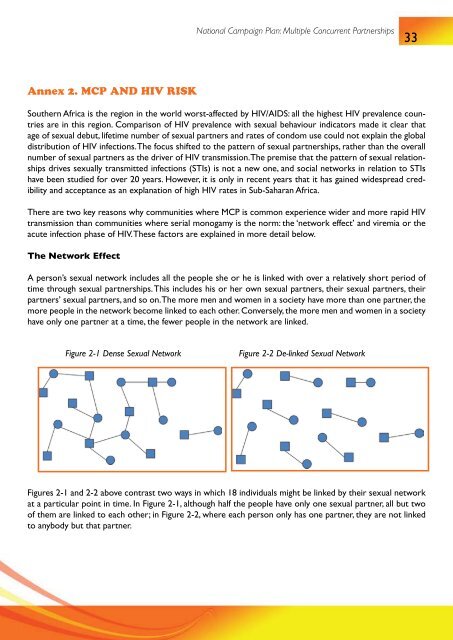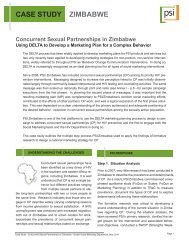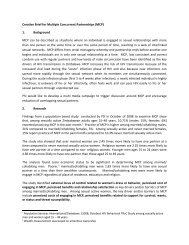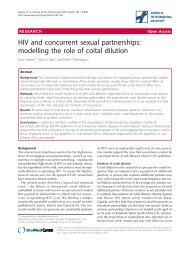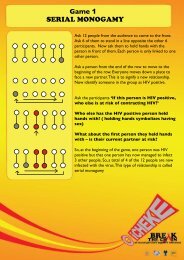O Icheke National Campaign Plan - CONCURRENT SEXUAL ...
O Icheke National Campaign Plan - CONCURRENT SEXUAL ...
O Icheke National Campaign Plan - CONCURRENT SEXUAL ...
- No tags were found...
Create successful ePaper yourself
Turn your PDF publications into a flip-book with our unique Google optimized e-Paper software.
<strong>National</strong> <strong>Campaign</strong> <strong>Plan</strong>: Multiple Concurrent Partnerships33Annex 2. MCP AND HIV RISKSouthern Africa is the region in the world worst-affected by HIV/AIDS: all the highest HIV prevalence countriesare in this region. Comparison of HIV prevalence with sexual behaviour indicators made it clear thatage of sexual debut, lifetime number of sexual partners and rates of condom use could not explain the globaldistribution of HIV infections. The focus shifted to the pattern of sexual partnerships, rather than the overallnumber of sexual partners as the driver of HIV transmission. The premise that the pattern of sexual relationshipsdrives sexually transmitted infections (STIs) is not a new one, and social networks in relation to STIshave been studied for over 20 years. However, it is only in recent years that it has gained widespread credibilityand acceptance as an explanation of high HIV rates in Sub-Saharan Africa.There are two key reasons why communities where MCP is common experience wider and more rapid HIVtransmission than communities where serial monogamy is the norm: the ‘network effect’ and viremia or theacute infection phase of HIV. These factors are explained in more detail below.The Network EffectA person’s sexual network includes all the people she or he is linked with over a relatively short period oftime through sexual partnerships. This includes his or her own sexual partners, their sexual partners, theirpartners’ sexual partners, and so on. The more men and women in a society have more than one partner, themore people in the network become linked to each other. Conversely, the more men and women in a societyhave only one partner at a time, the fewer people in the network are linked.Figure 2-1 Dense Sexual NetworkFigure 2-2 De-linked Sexual NetworkFigures 2-1 and 2-2 above contrast two ways in which 18 individuals might be linked by their sexual networkat a particular point in time. In Figure 2-1, although half the people have only one sexual partner, all but twoof them are linked to each other; in Figure 2-2, where each person only has one partner, they are not linkedto anybody but that partner.


